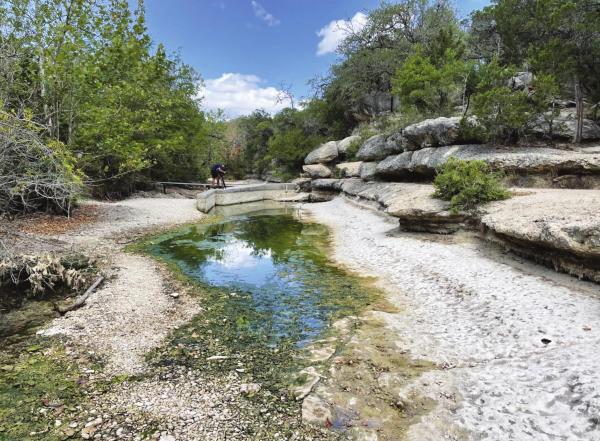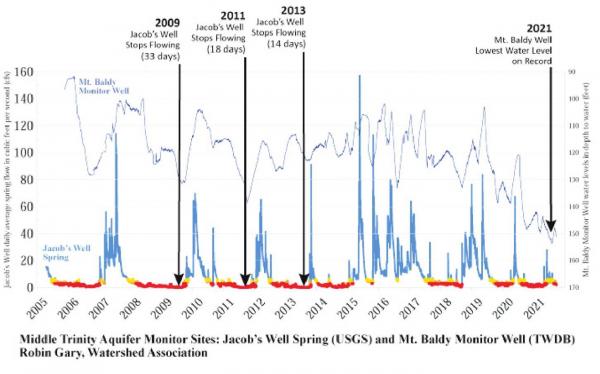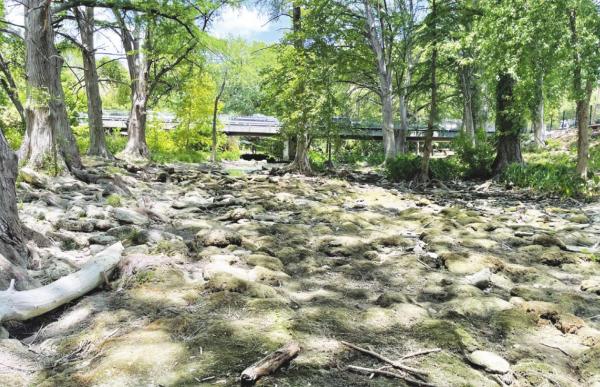Jacob's Well flow stopped
Zero flow was recorded at Jacob’s Well for the fourth time in recorded history.
Jacob’s Well is part of county-owned Jacob’s Well Natural Area in Hays County. The U.S. Geological Survey measured zero cubic feet per second discharge from Jacob’s Well in recent days, Hays County’s Parks and Recreation Department said.
The Wimberley Valley Watershed Association said flow ceasing at Jacob’s Well has serious ramifications for the surrounding community as the Middle Trinity Aquifer is both a major water supply for the area and the water source for Jacob’s Well, the headwaters of Cypress Creek located near Wimberley.
“Since 2005 when the USGS monitoring station was established at Jacob’s Well, there have been three years where the daily average spring flow reached zero — 2009, 2011, and 2013. Without rainfall soon, 2022 will be added to the list,” said Robin Gary, Wimberley Valley Watershed Association managing director. “Jacob’s Well spring flow is directly affected by drought and groundwater pumping. According to the USGS flow record, yesterday Jacob’s Well spring flow ranged from 0.28 to 0 cubic feet per second, with an average flow of 0.06 cfs. Jacob’s Well is an effective drought indicator for the area.”
Segments of Cypress Creek have gone dry with little to no flow coming from Jacob’s Well over the past months. The Wimberley Valley Watershed Association said the few deep pools along Cypress Creek remaining are sustained by local, gallonsper-minute springs within the creekbed and provide the only sanctuary for wildlife and aquatic species.
From the groundwater standpoint, water levels in monitor wells are steadily declining, the Wimberley Valley Watershed Association added, stating that there are many reports of residential wells having trouble, and bulk water delivery services have long waitlists.
Groundwater conservation districts have declared drought stages to reduce pumping and protect existing groundwater supplies throughout the Hill Country. Hays Trinity Groundwater Conservation District declared a Stage 3 Drought with 30% reduction in pumping on April 7 when the 10-day average flow dropped below 3 cfs. An Emergency Drought declaration with 40% reduction in pumping is expected in the coming weeks, the Wimberley Valley Watershed Association stated.
Rainfall deficits are as much as 8-12 inches below average across the Hill Country. Residents and businesses in Hays County are heavily reliant on groundwater, making conservation the key to extending the existing groundwater supplies until wet weather can provide the rainfall, runoff, and recharge needed to replenish groundwater systems, the Wimberley Valley Watershed Association said. Coordinated conservation is essential to safeguard water supplies and environmental flows in springs, creeks and rivers. Homeowners can substantially reduce water use by turning off outdoor irrigation systems and restricting outdoor water use.




